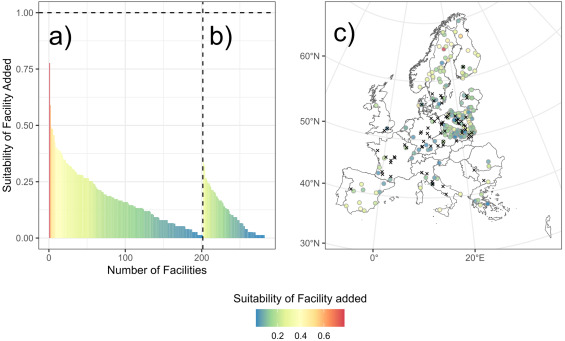New Research Highlights Co-Location as Key to Reducing Sampling Bias in eLTER Research Infrastructure
The Integrated European Long-Term Ecosystem, critical zone and socio-ecological Research Infrastructure (eLTER RI) is pleased to announce the publication of a significant study on the potential of co-location to mitigate sampling bias within environmental research infrastructures. This research, published recently by Ohnemus et al. in Ecological Indicators, offers important insights and future recommendations for enhancing the representativeness and effectiveness of research infrastructures across Europe.
Sampling bias—the uneven spatial distribution of in-situ research facilities relative to the ecological and socio-economic variability of the target region—has long challenged ecological research. The study demonstrates that co-location, the strategic integration of multiple research infrastructures at the same in-situ facility, can significantly reduce such bias, enhancing the geographical and thematic representativeness of infrastructures like eLTER RI.
Key findings of the research include:
- Adding candidate facilities from seven pan-European research infrastructures to eLTER RI can reduce sampling bias by up to 40% for anticipated future climate scenarios, particularly benefiting underrepresented regions such as Eastern Europe and Fennoscandia.
- Despite these improvements, co-location alone cannot completely eliminate bias, especially in the Iberian Peninsula and some Mediterranean regions, where candidate facilities are sparse.
- The study recommends prioritizing co-location of candidate facilities that most effectively counteract bias, with a focused effort to establish new sites in underrepresented regions.
- Future data analyses should also address residual bias by selecting less biased or unbiased subsets of facilities to ensure accurate continental-scale ecological assessments.
The research integrates advanced analytical approaches, combining representativity and transferability analyses to identify candidate sites with the highest potential to improve network coverage. This approach ensures that additions to the network consider both current ecosystem conditions and projected environmental changes under climate scenarios RCP4.5 and RCP8.5.
Thomas Ohnemus, lead author of the study, remarks: "Co-location offers a cost-efficient and scientifically robust pathway to densify research infrastructure networks while improving their geographic and ecosystem representativeness. However, to fully overcome sampling bias in eLTER RI, additional facilities are needed, especially in Mediterranean regions. Continuous monitoring and adaptation of the network design are essential as environmental conditions evolve."
 Fig. 4. Suitability of a facility added, i.e. the probability that a facility is added in one of the best performing runs (n = 25), illustrated in colour. The suitability depicted here is the mean of the three individual probabilities of addition in either the current, the RCP4.5 or the RCP8.5 facet. The dashed horizontal line depicts the maximally possible suitability of 1. (a) Includes all facilities that are suggested by both the representativity and the transferability analysis, (b) includes all facilities that are only suggested by the representativity analysis. The dashed vertical line separates the sub-panels (a) and (b). (c) Coloured points illustrate candidate facilities in (a) with their suitability of addition to eLTER RI. Black crosses illustrate all candidate facilities depicted in (b). Boundaries depict the study region and not necessarily accepted geographic boundaries.
Fig. 4. Suitability of a facility added, i.e. the probability that a facility is added in one of the best performing runs (n = 25), illustrated in colour. The suitability depicted here is the mean of the three individual probabilities of addition in either the current, the RCP4.5 or the RCP8.5 facet. The dashed horizontal line depicts the maximally possible suitability of 1. (a) Includes all facilities that are suggested by both the representativity and the transferability analysis, (b) includes all facilities that are only suggested by the representativity analysis. The dashed vertical line separates the sub-panels (a) and (b). (c) Coloured points illustrate candidate facilities in (a) with their suitability of addition to eLTER RI. Black crosses illustrate all candidate facilities depicted in (b). Boundaries depict the study region and not necessarily accepted geographic boundaries.
For eLTER RI and the broader European environmental research community, these findings provide actionable recommendations to optimize facility networks, promote data interoperability, and support robust environmental policy making.
The full article is accessible as open access in Ecological Indicators. eLTER RI encourages researchers, policy makers, and stakeholders to explore its findings to guide future expansions and collaborations.
Read the publication: Thomas Ohnemus, Steffen Zacharias, Jaana Bäck, Michael Mirtl, Thomas Dirnböck, The potential of co-location to mitigate sampling bias in Research Infrastructures, Ecological Indicators, Volume 181, 2025, 114376, ISSN 1470-160X, https://doi.org/10.1016/j.ecolind.2025.114376.(https://www.sciencedirect.com/science/article/pii/S1470160X25013081)